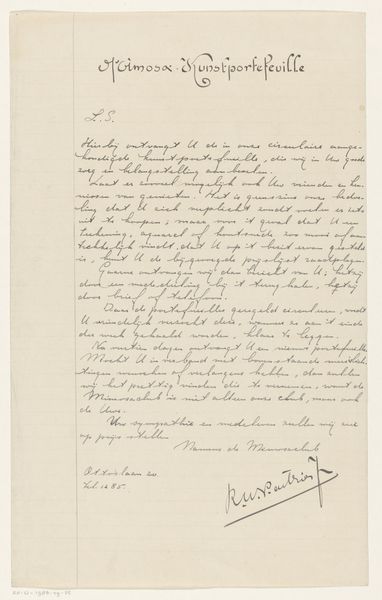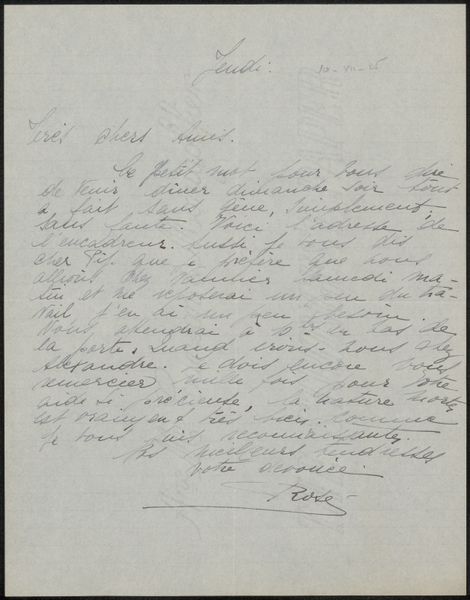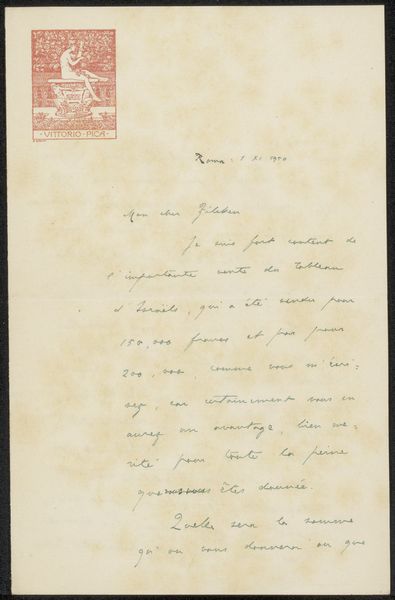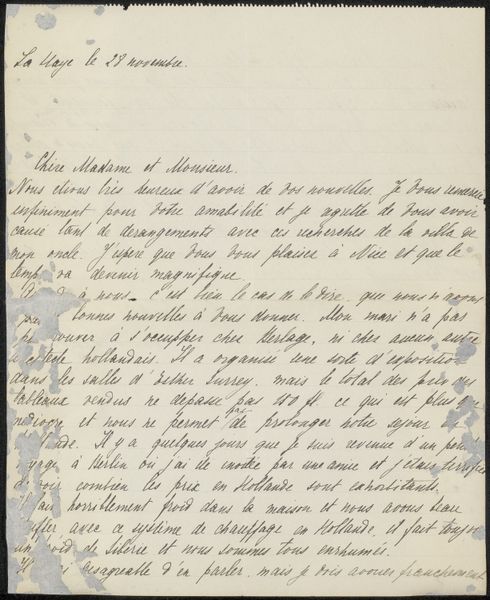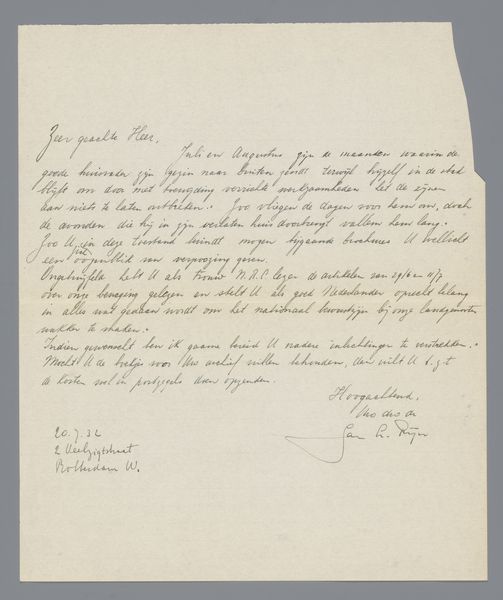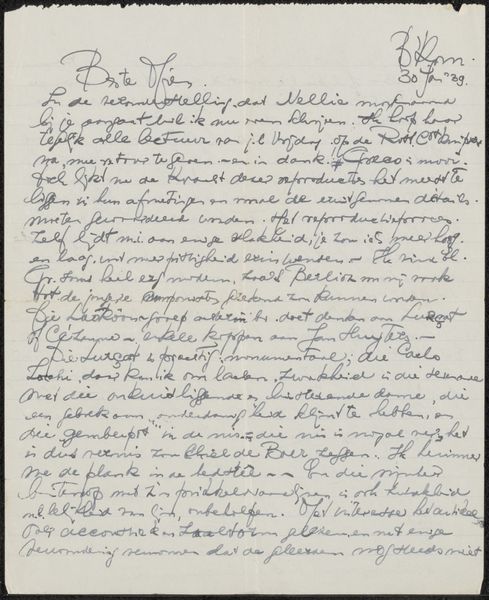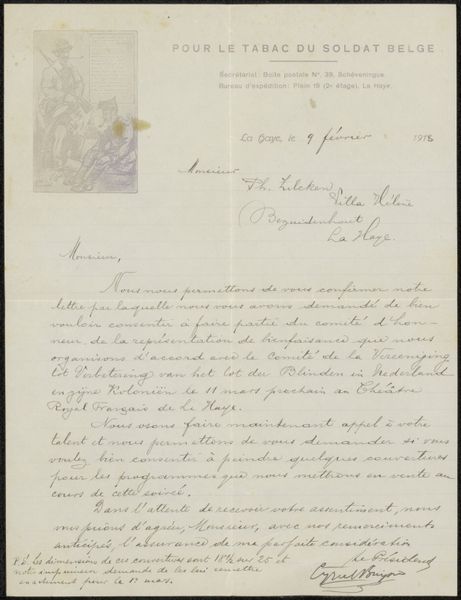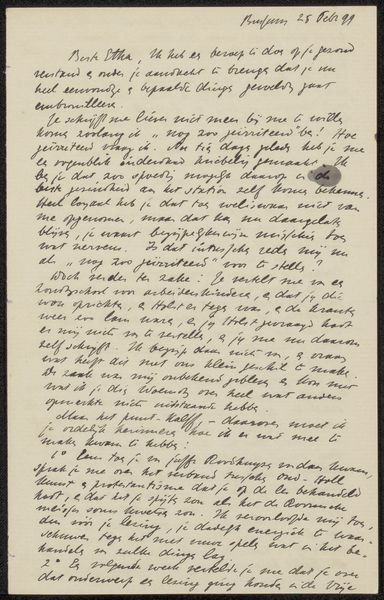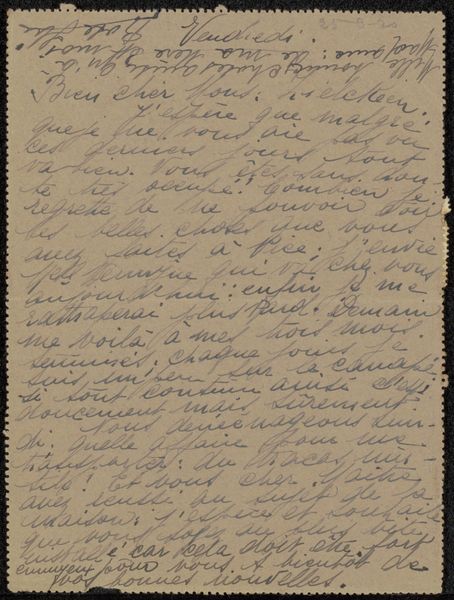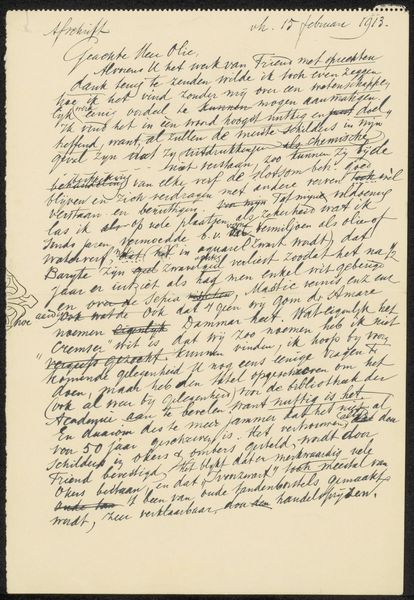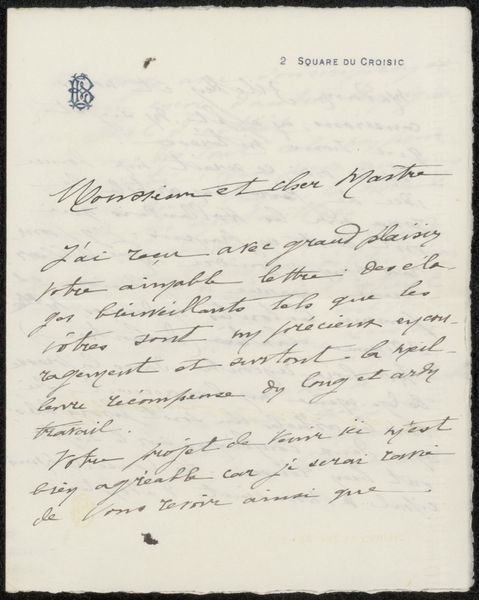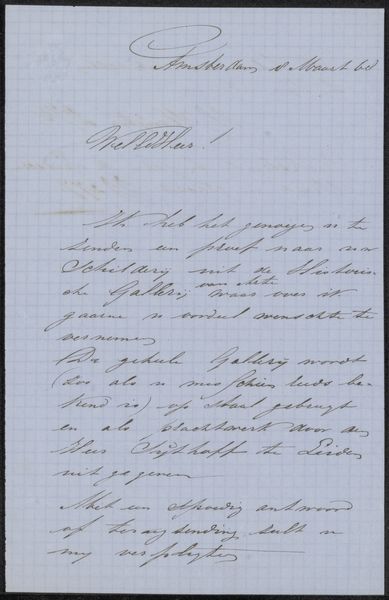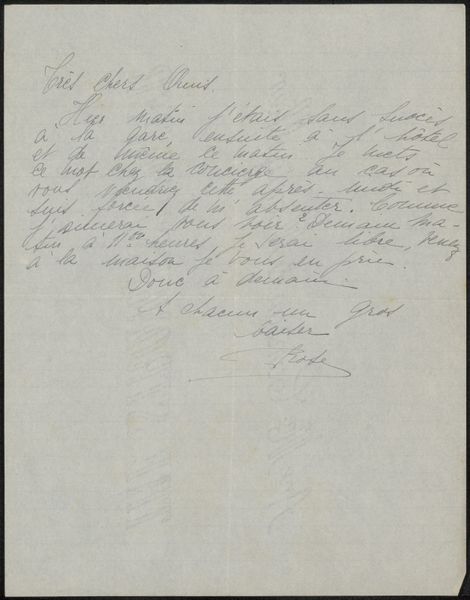
Brief aan Jan Ponstijn en Henriëtte Johanna Petronella van Hilten Possibly 1918
0:00
0:00
Dimensions: height 254 mm, width 203 mm
Copyright: Rijks Museum: Open Domain
Curator: Here we have Leo Gestel's "Brief aan Jan Ponstijn en Henriëtte Johanna Petronella van Hilten," possibly from 1918, housed at the Rijksmuseum. A watercolor and ink drawing on paper. My eye is immediately drawn to the contrast. Editor: I see that too! The composition places the frenetic action of war above a handwritten letter. It feels quite personal, that intimate script contrasted against the cartoonish figures fleeing an explosion. What does the inscription "Direction Heimat" suggest? Curator: I agree. That tension speaks volumes about the lived experience of wartime. Examining the materials further, we notice the aged paper itself contributes to the artwork's story. Its texture and color create a sense of immediacy, bridging the gap between us and the historical context. Post-Impressionist techniques in watercolor lend to a swiftness, a sense of documentation right from the front. Editor: Precisely. Consider the symbolic weight of these running soldiers—symbols of displacement, of an era defined by upheaval, of the universal instinct to escape. Then, you have the bursting explosion which evokes not just physical devastation but shattered ideals. Gestel cleverly marries these historical references. Note that the helmetless, sword-wielding soldier seems a peculiar addition for modern warfare. Curator: A vital point, actually. He draws a clear visual distinction here. And consider how the letter integrates into this sketch – it isn’t just text. Gestel uses it as material, allowing its formal qualities to contribute meaning in tandem with its written message and illustrative forms. Laborious penmanship set in contrast against mass warfare. Editor: Right, that opposition creates layers of understanding. One sees the immediate threat of war countered by a longing for a return to normalcy; perhaps even a bit of birthday cheer as indicated above. It acts like an absurdist statement by being itself an invitation into psychological realities faced at this time. Curator: Absolutely, so by combining formal experimentation, by acknowledging artistic and utilitarian boundaries within art’s modes of production and reception; and incorporating those of written language and art-making; Gestel speaks through the visual material. Editor: Beautifully said. Seeing these symbols in relation offers a nuanced perspective into Gestel's interpretation of WWI: from document to an impactful reflection on conflict. Curator: Precisely. It invites us to consider how Gestel used the letter and illustrative medium itself to make the personal become historically potent.
Comments
No comments
Be the first to comment and join the conversation on the ultimate creative platform.
